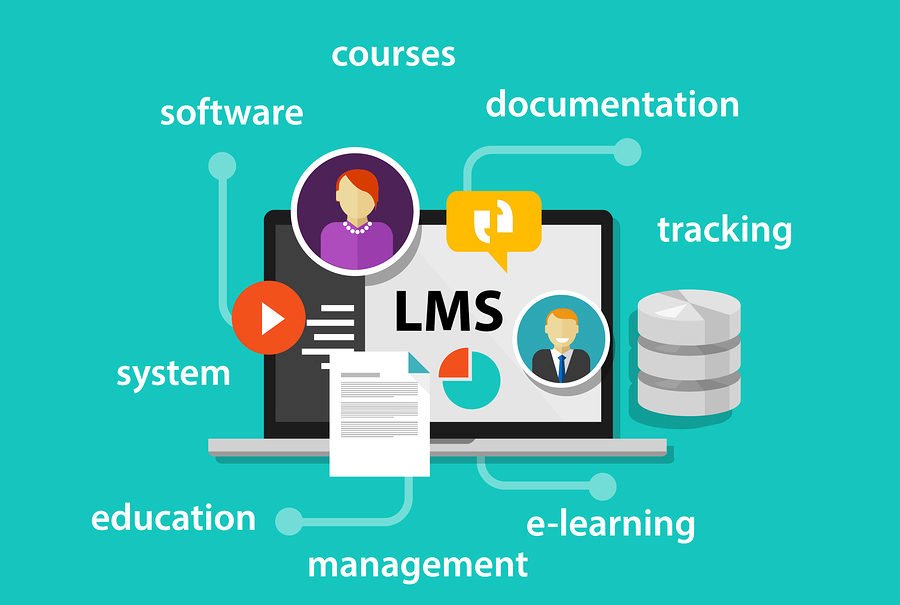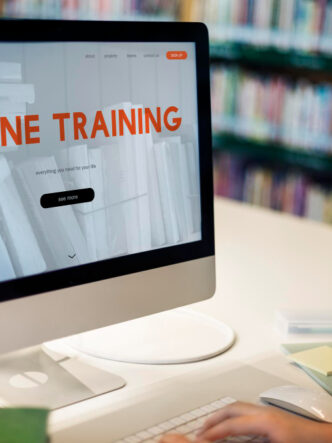When a new organization decides to decentralize the training process, they usually upload new training courses to Learning Management Systems. A lot of professionals will not give it a second thought. In an increasingly video-oriented world, this may turn out to be a huge problem.

LMSs aren’t meant for hosting something as vital as a training video for a number of reasons. They aren’t able to take care of large media files, an increasingly normal phenomenon with the rapid improvement of video capturing and recording technology.
In such cases, they won’t be able to deliver in good time, either, probably delivering the video as is rather than passing it through a complex myriad of algorithms to decrease its size first and so on.
Some of the most glaring issues of hosting videos on your LMS that we will cover are:
- Inability to load -very heavy Files to store (>1GB per 1hr of video)
- The issue of none optimized delivery to smaller screens causing buffering and bad viewing experience.
- Remote users on mobile will scarcely stream videos to conserve internet packages causing low viewer adoption and reduced ROI.
- Delivering Video content yourself will overload your network and require constant costly investment in hardware. (as demand for video is constantly on the rise. especially with new educational trends like flipped classrooms and mixed learning)
These and more are some of the most common mistakes Learning and Development professionals often make when it comes to hosting videos. An LMS may be a crucial part of an organization’s learning programs but, unfortunately, they can’t do it all. Especially not at scale.
Pitfalls of your LMS when hosting videos
They have trouble delivering large media videos
Video files are always going to be significantly larger than the average text document. This depends on the video quality, of course, but the size of a ten-minute video can easily exceed 1 Gigabyte.
Thirty-minute videos like those normally used in the onboarding process are going to be several gigabytes of data in size. Just imagine how large a 3-hour seminar delivered in high resolution is going to be.
Most LMSs are built to deal with text rather than these kinds of large video files. The result: endless buffering as the LMS server struggles to deliver the video concurrently to a hundred connected devices. If you’re unlucky, you might manage to eat up all the bandwidth you’ve been allocated that month – and bandwidth can be costly!
Modern, scalable video CMSs manage to take care of this problem by either utilizing advanced server and browser caching, leveraging CDNs or ‘streaming’ files.
CDNs (Content Delivery Networks) are essentially a top-level cache on top of your video, so you don’t have to contact the server to get what you want. Streaming (or more accurately, bitrate streaming) works by delivering the video little at a time, rather than a whole 8GB file the network will struggle with.
They don’t offer live streaming capabilities
Live streaming has become commonplace in the modern digital world. It’s all over – Facebook is going it, Twitter’s doing it and even apps like WhatsApp have jumped onto the bandwagon.

So, what’s the big deal, then? Can’t an LMS get products together and implement a way for you to air your conferences live? Sadly, it’s not that simple.
Most LMSs have enough on their plate as is without having to worry about implementing a new life-changing feature like live streaming. While it might seem simple in the end, the amount of engineering that goes into something like this is incredibly enormous.
Between making sure nobody can eavesdrop on your calls and being able to make sure the video can reduce video quality rather than drop the call altogether, they don’t have the resources.
There is no video analytics data available
One of the reasons LMSs grew so popular is their ability to offer detailed reports on how learners progress throughout the learning and training process. That kind of data continues to be infinitely useful to trainers and companies alike, with only one major irredeemable flaw in the system – a lack of video analytics data.
There’s just no way of you knowing whether or not every employee present clicked the ‘play’ button, no way of knowing how far they all individually got or whether they even completed it.

These and more pieces of data are all that is provided by advanced hosting providers and can be incredibly useful in improving the quality of your videos. A lot of private video hosts offer these by default.
The video protection problem
Another significant problem you will run into while looking for a place to host your videos is how to prevent them from being stolen. The video protection problem is a difficult one since all one has to do to get their hands on your video is to utilize screen-recording software.
However, the point of protecting your video isn’t entirely to prevent people from stealing them, just to make it hard enough that they either don’t bother or give up entirely.
Looking at a site like YouTube, you’d be tempted to think they do offer protection, since downloading a video isn’t as easy as right-clicking and using the ‘Save Video As’ option. That couldn’t be further from the truth.

Modern private video hosts employ a number of interesting solutions to this problem. One would be using DASH streaming, a protocol supported by all modern browsers, so nobody can grab the video off of your site. Another would be delivering the video per IP address to prevent hotlinking and so on.
The mobile incompatibility problem
The final problem with relying on an LMS for your video is delivering them to mobile devices. For one, a lot of them use technology that has been more or less deprecated by the modern world.
Flash was retired on all Apple devices for security reasons and you have to jump through a ton of hoops to enable it even on a normal computer. Technology is built on top of a myriad of codecs, file types and standards that will drive your mind nuts trying to figure out.
The mobile compatibility problem is just as simple as it sounds, at this point: not all mobile devices are going to be compatible with the kind of video file you want to offer them.

Some will play your MP4 without sound, others don’t support MKV while others will grind to a halt trying to play and AVI file. Sadly, LMSs don’t have automatic on-the-fly transcoding – they can’t turn one kind of video into another before delivery.
These are just some of the reasons you shouldn’t host videos on your LMS and you can add to the list all the many functions you won’t get with an LMS such as auto-captioning and heatmaps that you get with a professional video hosting providers.









